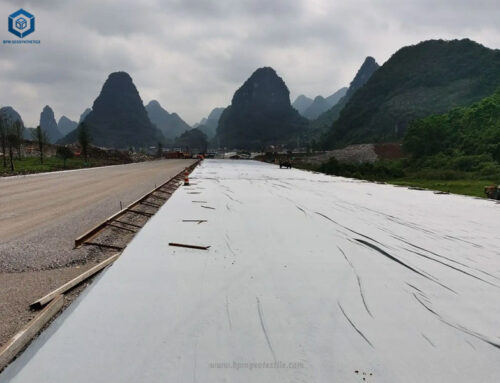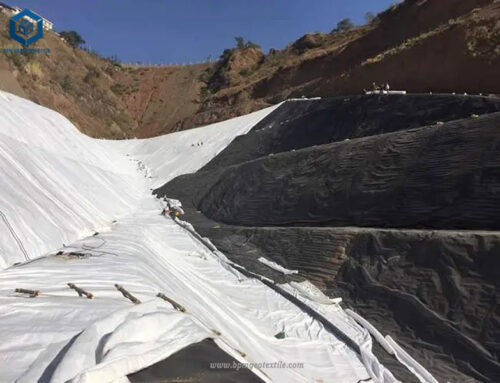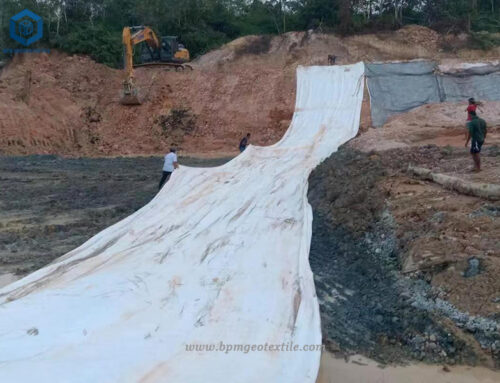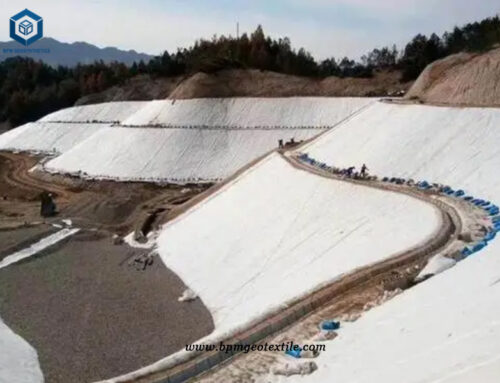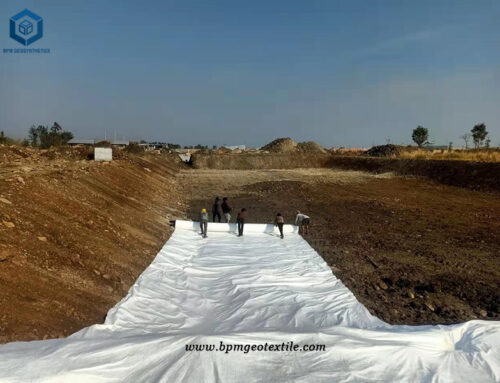Case study
- Location: Canada
- Product: Polyester Filament Geotextile
- Purpose: Urban Road Construction
Issue
Urban road construction is a key factor in promoting urban development. It covers the contents of various disciplines, such as preliminary design, road planning and construction, and pavement structure design. Affecting the construction period and quality, it will also bring great losses to the construction. If these unreasonable constructions are put into use, it will also cause serious quality problems and potential safety hazards. In the current road construction and construction, there are also many such problems that need to be solved urgently. If they cannot be solved in time, it will also affect the sustainable development of the city. The type of road to be built by the customer is an expressway. According to the urban construction standard, the road design life is 20 years when the road traffic volume reaches a saturated state.
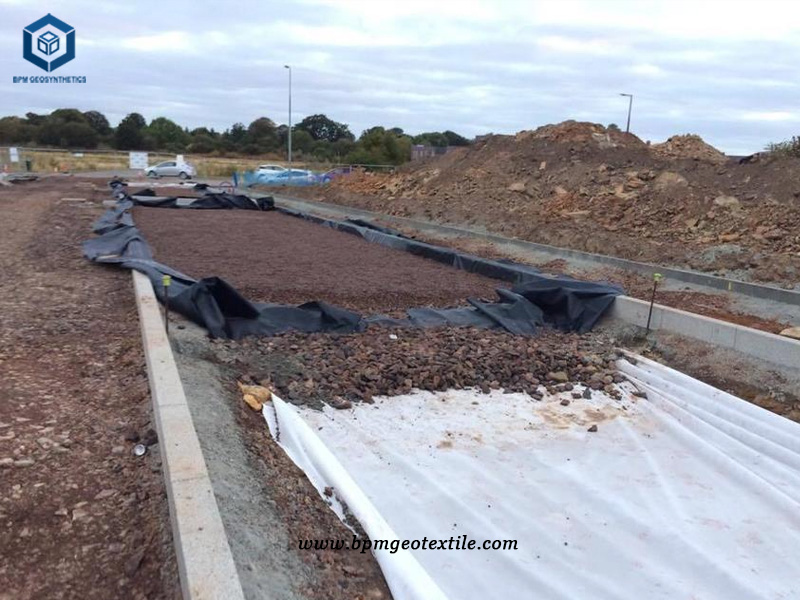

Construction Notes
1. Surface preparation
The first thing to do is to clean the road surface so that it is free of debris, preferably with water. Repair the cracks larger than 0.6cm on the road surface. The repair materials can be selected from asphalt concrete, asphalt sand and cement concrete according to the situation.
2. Spray sticky oil
Spray sticky layer oil on the road with a hot asphalt distributor. The amount of oil depends on the oil absorption rate of the road, and the general dosage is between 0.9-1.2kg/㎡. The oil number is generally better to use bitumen above 60.
If the method of sticky layer oil is adopted twice, the first dosage is between 0.5-0.7kg/㎡, then the asphalt geotextile is laid, and the sticky layer oil is sprinkled on the asphalt geotextile, and the dosage is between 0.4-0.5kg/㎡.
3. Paving surface
When laying the geotextile, it is necessary to ensure that the coiled material is at a certain height from the ground. The geotextile is stretched and straightened, it will be bonded with the sticky layer of oil, brushed flat with a brush and rolled with a steel roller.
When laying the geotextile, it should be as straight as possible to give a certain tension. The bonded fabric has wrinkles larger than 1.27cm, it should be cut with a knife and overlapped along the laying direction. When laying fabric at road turns, it should be cut on the inside of the fabric turn and lapped along the laying direction. The overlapping length between the fabric and the fabric is required to be 4-7.5cm.
4. Stone chips
After the fabric is fully combined with the viscous oil, sprinkle gravel on it. The gravel can generally be used melon seed chips or medium-coarse sand. The amount of gravel depends on the oiliness of the fabric surface, generally about 2m³/K㎡ .
5. Fixed
When laying geotextiles in a large area, at the horizontal lap joints of the fabrics, fixers can be considered according to specific conditions.The fixer includes a fixation nail and a fixation iron sheet. Fixing nails can be used cement nails, shooting nails, nails are about 8cm long, and iron strips with a thickness of 1mm and a width of 3cm are used to fix the iron sheet. The nails can be fixed with a hand hammer or a nail gun, and a high-speed nail gun can be used in the case of a relatively closed room at the grassroots level.
6. Environment
At the same time, the geotextile should be kept dry. If it is exposed to rain, it should be completely dried before laying. When laying geotextiles, construction workers should not smoke. When the asphalt used to bond the geotextile cools down, do the top layer. Do not drive on the geotextile when the geotextile is saturated and the hot asphalt has not cooled down, and do not turn around and brake on the laid geotextile.


Benefit
Polypropylene non woven filter fabric is made by the method of polypropylene filament forming and consolidation. Its fibers are arranged into a three-dimensional structure. It is a new building material in geotechnical engineering and civil engineering applications. In addition to the mechanical strength characteristics such as puncture, it also has good vertical and horizontal drainage performance, good elongation performance, and good chemical functions such as high biological resistance, acid and alkali resistance, and aging resistance. Polypropylene non woven filter fabric also has a wide pore size range, tortuous void distribution, good permeability and filtration performance. Light weight, good overall continuity, easy construction, high tensile strength and corrosion resistance. It has the advantages of strong chemical resistance, high melting point and high strength. Compared with woven fabrics, non-woven fabrics have lower cost, simple process, high output and no significant directionality in tensile strength.
Specification of Polypropylene Non Woven Filter Fabric for Urban Road Construction In Canada
- Total Geotextile Quantity–200,000 square meters
- Grams Weight–320gsm
- Each Roll Size–5.9m*100m
About BPM
BPM manufactures and wholesales many types of effective and states of the art geotextile, geomembrane, and other geosynthetics to over 36 countries. BPM geosynthetic products are widely used across a variety of industries including waste containment, water containment, aquaculture, industrial project, energy project and mining projects, etc. Our main customers are from Australia, France, Sweden, UK, Hungary, New Zealand, Poland, Mexico, Ecuador, Brazil, Pakistan, Bangladesh, Thailand, Vietnam, Malaysia, Indonesia, Singapore, Philippines, Sri Lanka, India, UAE, Saudi Arabia, Qatar, Kenya, etc.
BPM is not only manufacturing best quality geosynthetic products but also providing professional design and installation service. OEM, ODM, custom development and fabrication are also available. If you have any questions or inquiries, please fill and submit the following form, we will reply as soon as possible.

